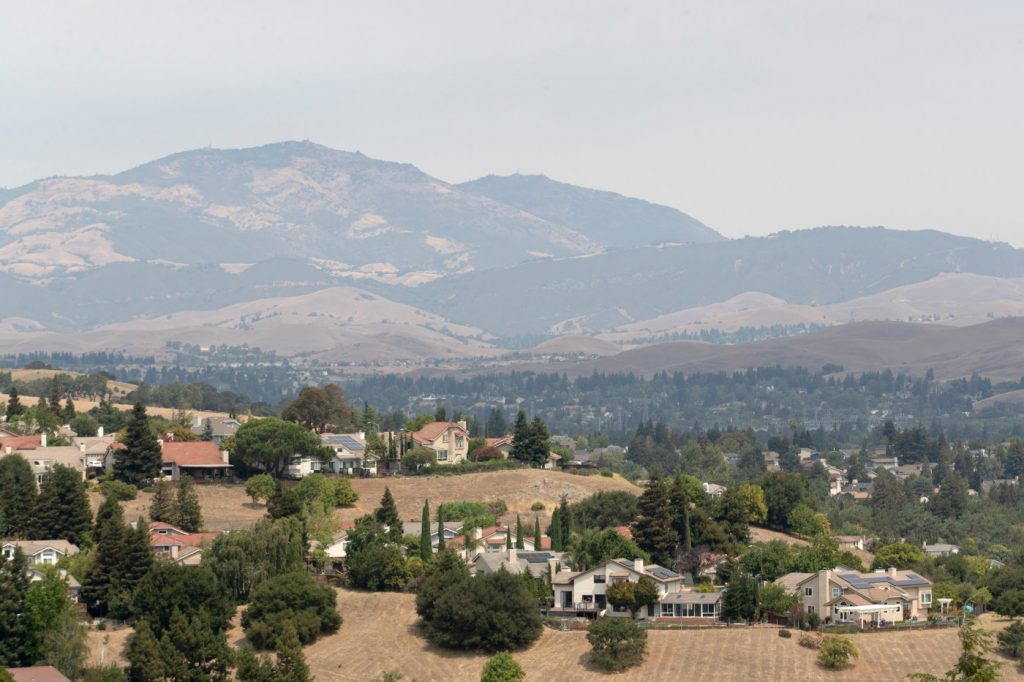DUBLIN — A group of environmentalists are suing the city of Dublin over a November ballot measure which aims to open the boundaries of a protected open space area.
While the city calls it the “Traffic Relief, Clean Air/Open Space Measure,” environmentalists who a decade ago established an “urban limit line” protecting 3,282 acres in the surrounding Doolan and Collier Canyons from commercial development say the measure will do the exact opposite.
If approved, Measure II would return discretion to the city to decide to commercially develop 80 acres along the Dublin Boulevard extension up to North Canyons Parkway. But the city maintains it wants to reduce traffic, protect open space and preserve clean air in the Tri-Valley region. Upon approval after the Nov. 5 election, the city could study commercial development up to 1,200 feet north of Interstate 580.
Seth Adams, land conservation director for Save Mount Diablo, said that would threaten the area’s natural habitat which residents in 2014 fought to protect from possible production and distribution centers. His organization, along with another nonprofit environmentalist organization called Friends of Livermore, filed a lawsuit last month against Dublin in an attempt to block Measure II from appearing on the ballot.
One of the major complaints the group has is that the city waived doing an environmental study of the area.
Alameda County Judge Michael Markman on Aug. 21 denied the group’s request to remove the measure, but Adams said the courts still have to weigh in on whether the city followed the law by not conducting an environmental review before proposing the measure. The next hearing on the case is Nov. 7 after the election, Adams said.
“Dublin is trying to do a land grab to allow development along the road supposedly to help pay for the road,” Adams said. But, he added, “all of the cost of this would be on Dublin residents.”
The Dublin City Council approved putting the measure on the fall ballot on July 16. After the open space boundary was set in 2014, the city relinquished its authority to approve developments along the road extension to voters. Measure II would send the power back to the council.
Dublin Mayor Michael McCorriston said during the July 16 that it would be “undeniable” that this measure’s intention is “improving the vitality of our community.”
“Whatever we decide tonight we’re all here because we want to diversify and improve our local economy,” McCorristion said.
But environmentalists disagree. Adams argued that the city is looking out mostly for the interests of developers over the interests of the protected environment.
“Urban limit lines are meant to be sacred. And you need to be very deliberate if you’re proposing to break them,” Adams said. “And if they break it for this developer, they’ll break it for other developers.”
Dublin and Livermore previously had an agreement to maintain the agricultural area along the proposed road extension, known as the Crosby Properties, if the space remained open space, and the two cities agreed to split the cost of the road. But because Dublin wants to annex the area around the roadway to develop for commercial use, Livermore is now threatening to pull funding and make Dublin pay for the whole thing.
Livermore Mayor John Marchand in an interview said his city won’t pony up any of the road money if the measure passes “because no city is going to pay to build a road in the city limits of another city.”
“We’ve got enough responsibility looking after our roads,” Marchand said. “We’re not going to pay for a road in somebody else’s city.”


